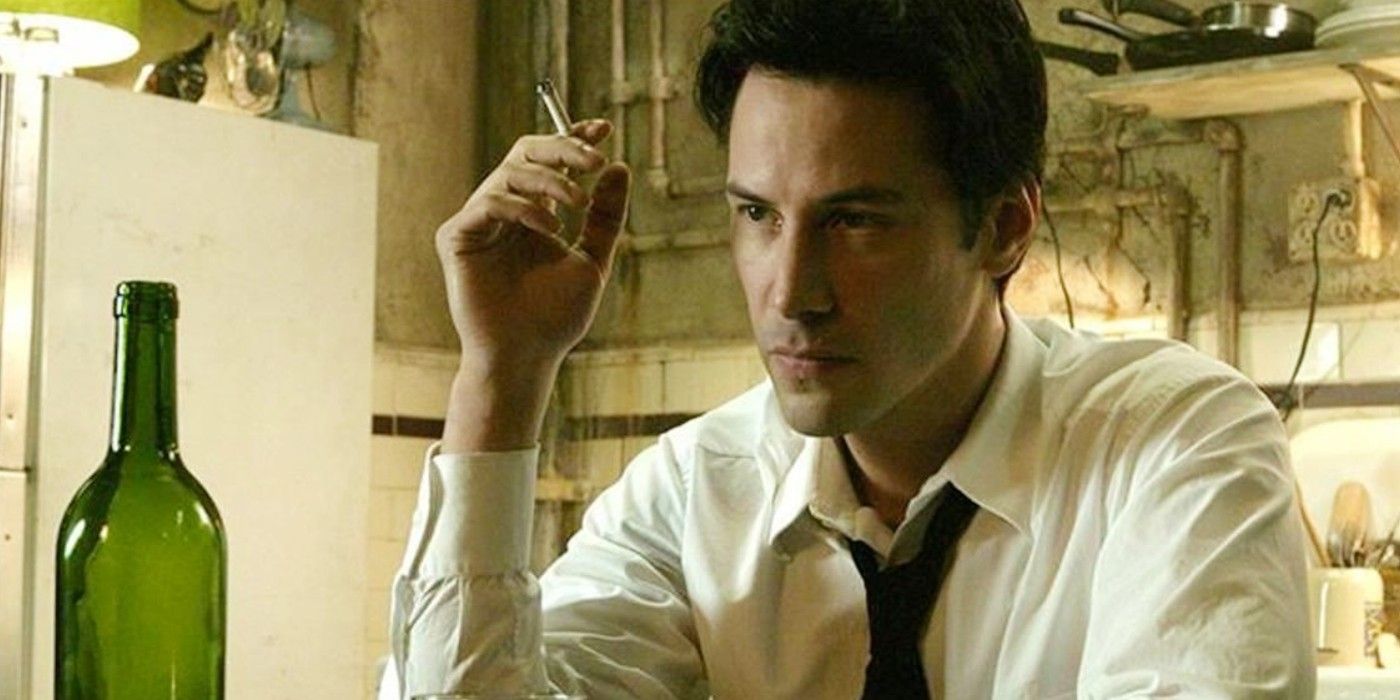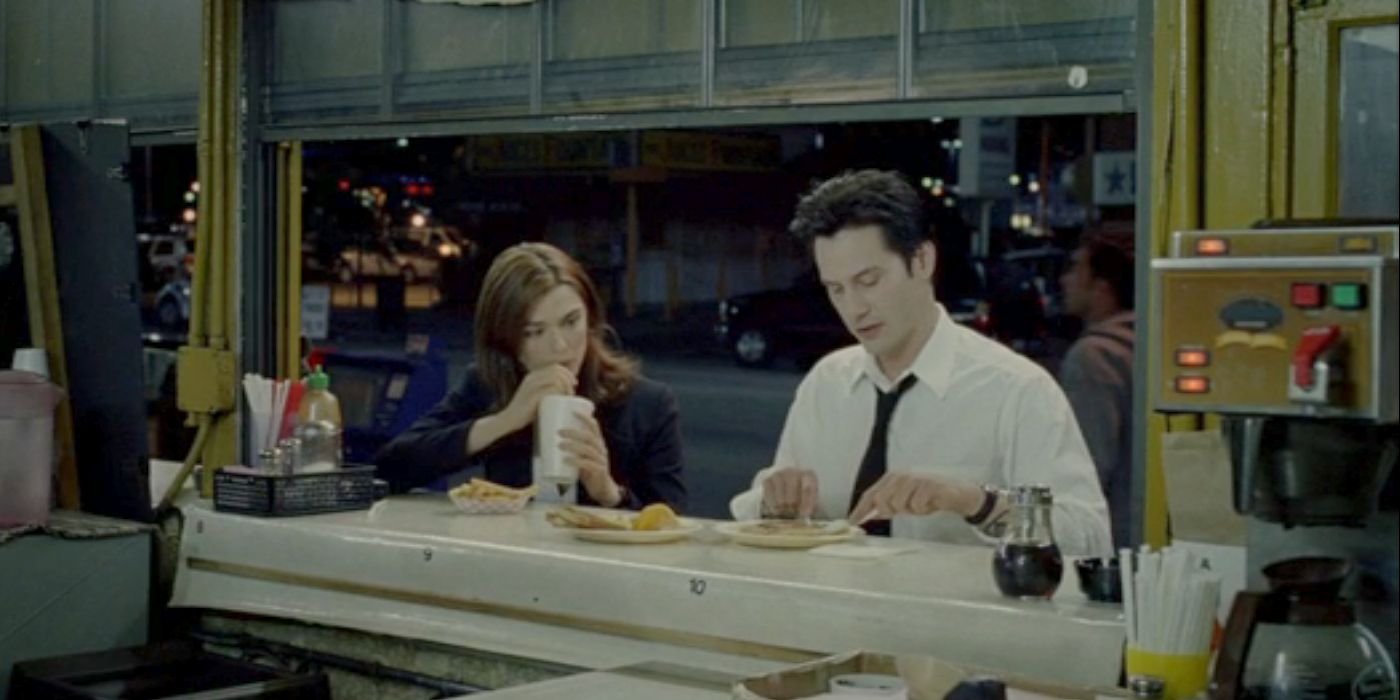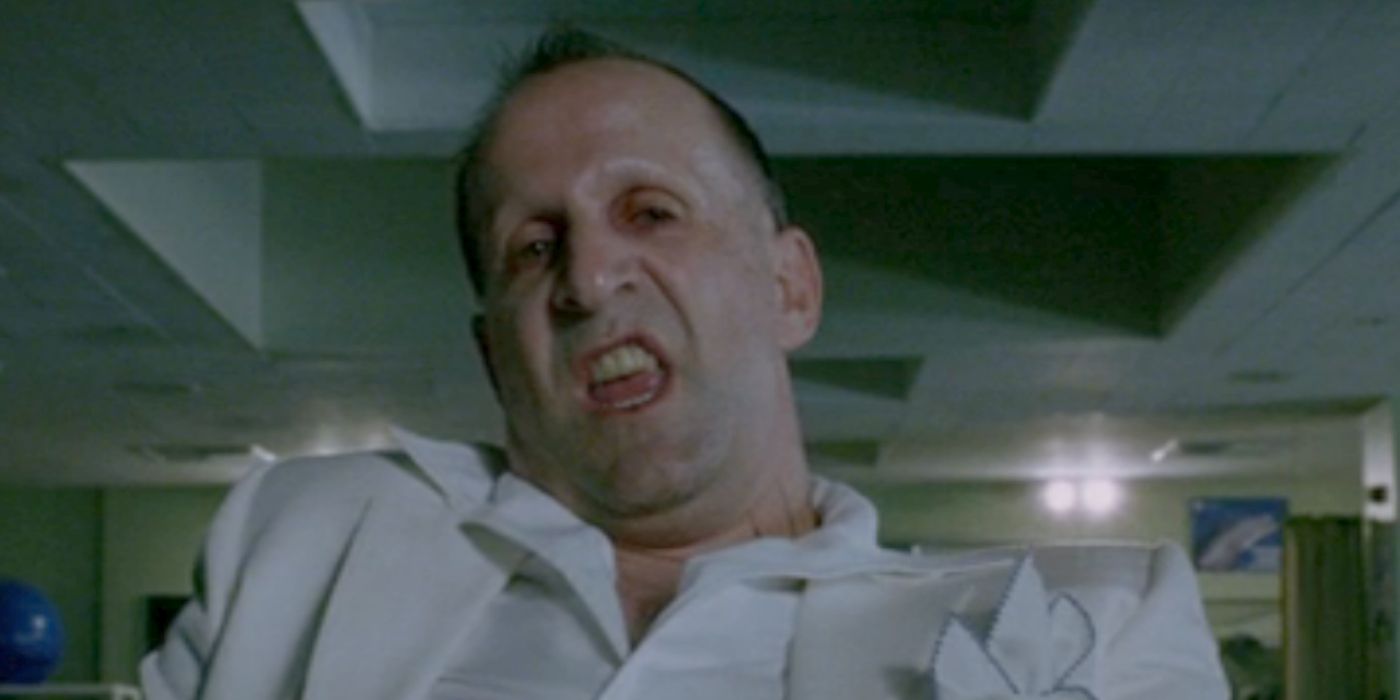The Keanaissance has come with a great many facets. From fans' artistic interpretations and wholesome stories of the actor, to memes and his taking part in a number of new and exciting projects, Keanu Reeves meeting the love of his fans has pumped new life into his career, even in retrospect. One of the retrospective recipients of acclaim from Reeves' career has been 2005's Constantine, roundly reviled at the time of its release but recently given a sequel nearly two decades later.
Directed by Francis Lawrence, the 2005 supernatural action noir film was viewed for some time as one of the worst comic book adaptations ever. To be entirely frank, Constantine is still not a very good adaptation of its source material. However, Constantine's uniqueness and incredible visual storytelling makes it one of the best-produced movies of the 2000s, and quite possibly one of the most visually interesting comic book movies ever made.
Constantine's truest advantage lies in its use of frames within the shot, encompassing characters and making them give the appearance of being within or without. To put it more literally, almost every time that a character is on-screen — which, given the noir-inspired nature of the film, is nearly every minute — there is a feature of the scenery forming a frame around them. In one scene, it may be the very obvious frame of the window of a street car. In another, it may be one side of a doorframe and the side of a bookshelf. Regardless, the frames serve the purpose of establishing a character's solitude and their belonging in the world.
However, that isn't all that the framing does. It allows for characters to physically transcend a metaphorical space. In the instance of Lucifer at the end of the film, he is framed incorrectly. The only frame that forms around his character is a square above his head that his character breaks the bounds of, showing his status of being a creature of three worlds transcending his typical plane. Likewise, John breaks a framing device when he puts his shoes into water when he goes to hell, transcending both the frame and his plane of existence. This is true both in crossing planes of existence (or "worlds") and in becoming metaphorically "part" of someone's world, as Rachel Weisz' Angela crosses a frame when she officially becomes a part of John's reality on the plane between angels and demons.
The framing is brilliant, but where it doesn't exist is just as smart. Hell in the movie is portrayed as a constant wasteland and is based on the imagery of a nuclear bomb mid-explosion, but its framing is claustrophobic and inconsistent. John is framed, but the demons are not. Frames in this area are not clearly delineated like in the rest of the film, but rough and jagged and often made of dangerous materials or hostile enemies. On the other end of the spectrum, there is only one clear shot with absolutely no framing: John's interrupted ascension to heaven. A thunderhead appears on his left, but it doesn't serve as a frame. For only a few seconds when viewing John's eternal reward, he has no framing and nothing blocking him; he is free.
There are many aspects of the underappreciated 2005 iteration of Constantine, and it certainly has qualities that deserve criticism. However, the ravenous nature of its downfall and the post-hoc realizations of the moviegoing community over the importance of adhering to comic book source material has led to even Rotten Tomatoes apologizing for its dismal rating. Frankly, Constantine being made in the late 2010s or the 2020s likely would have met with an entirely different reaction, especially given the positive reviews of Jenna Coleman's portrayal of Constantine on The Sandman. Regardless, the Hellblazer fanbase has been given another chance to see their film for what it's meant to be as Keanu Reeves and Francis Lawrence finally return to the brilliantly artistic world of Constantine.



